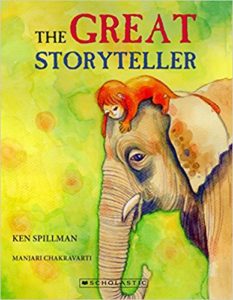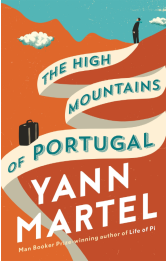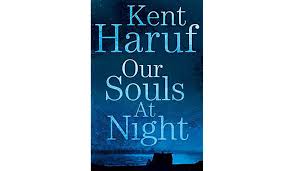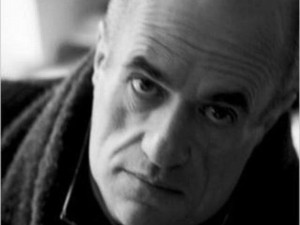No,
just feeling sad, I said.
Still?
Still?
I said. Sometimes I’m so sad I feel like a freak.
That
sounds like self-pity unrestrained, he said.
I
thought about my language. Indeed he was right. Not only was it immoderate but
it was imprecise. How do you compare sadness that takes over like an erupted
volcano to sadness that stays inside one, still as a still-born baby? People
talk about grief coming and going like waves, but I am not a breakwater, I am
not a boat, I am not a statue left on a rocky shore, tested for its endurance.
Let
me revise, I said. Sometimes sadness makes me unable to write.
Why
write, he said, if you can feel?
What
do you mean?
I
always imagine writing is for people who don’t want to feel or don’t know how
to.
And
reading? I asked. Nikolai was a good reader.
For
those who do.
For
weeks I had not read well. I picked up books and put them down after a page or
two, finding little to sustain me. I was writing, though, making up stories to
talk with Nikolai. (Where else can we meet but in stories now?)
See
my point? he said. You cannot not
write. You don’t even mind writing badly.
Because
I don’t want to feel sad or I don’t know how to feel sad?
What’s
the different? He said. Does a person commit suicide because he doesn’t want to
live, or doesn’t know how to live?
I
could say nothing.
(p.55-57)
….
Orphan,
widow, widower, I thought, but what do you call a parent who’s lost a child, a
sibling who’s lost a sibling, a friend who’s lost a friend?
I
told you nouns are limited, Nikolai said..
Words
are, I said.
(p.114)
Yiyun Li’s novel Where Reasons End is a tender-hearted, very moving, novel that delves into memories and half-finished conversations by the unnamed narrator with her dead child. It is achingly painful to read given that it seems as if the reader is eavesdropping upon very intimate moments between mother and child. Grief takes many forms. This is one. Losing a child but a teenager is terrible. Here the mother hearks back to conversations with her child. Holds on to the few memories she has. When a mother talks to her child, it is as if they cut off everything else in the world and are completely focused upon each other. It is in many ways like the oneness of being that a mother experiences with her child when it is in vitro.It may be hauntingly sad, grief-stricken book, a eulogy to one who took his life. It may mirror to some extent Yiyun Li’s life as her sixteen-year-old son committed suicide. But in an age where parenting and motherhood is spoken of ad nauseum. Motherhood narratives are rapidly becoming a critical genre of literature. Where Reasons Endbelongs very much to this literary space.
Yiyun Li is based in USA and writes in English. In a fabulous New Yorker essay published in January 2017, she explains why she chooses to write in English. Here are some extracts that shed some light on the manner in which she chose to craft her novel Where Reasons End.
Yet language is capable of sinking a mind. One’s thoughts are slavishly bound to language. I used to think that an abyss is a moment of despair becoming interminable; but any moment, even the direst, is bound to end. What’s abysmal is that one’s erratic language closes in on one like quicksand: “You are nothing. You must do anything you can to get rid of this nothingness.” We can kill time, but language kills us. … When we enter a world—a new country, a new school, a party, a family or a class reunion, an army camp, a hospital—we speak the language it requires. The wisdom to adapt is the wisdom to have two languages: the one spoken to others, and the one spoken to oneself. One learns to master the public language not much differently from the way that one acquires a second language: assess the situations, construct sentences with the right words and the correct syntax, catch a mistake if one can avoid it, or else apologize and learn the lesson after a blunder. Fluency in the public language, like fluency in a second language, can be achieved with enough practice.
Perhaps the line between the two is, and should be, fluid; it is never so for me. I often forget, when I write, that English is also used by others. English is my private language. Every word has to be pondered before it becomes a word. I have no doubt—can this be an illusion?—that the conversation I have with myself, however linguistically flawed, is the conversation that I have always wanted, in the exact way I want it to be.
In my relationship with English, in this relationship with the intrinsic distance between a nonnative speaker and an adopted language that makes people look askance, I feel invisible but not estranged. It is the position I believe I always want in life. But with every pursuit there is the danger of crossing a line, from invisibility to erasure.
…
When one thinks in an adopted language, one arranges and rearranges words that are neutral, indifferent even.
When one remembers in an adopted language, there is a dividing line in that remembrance. What came before could be someone else’s life; it might as well be fiction.
…
Often I think that writing is a futile effort; so is reading; so is living. Loneliness is the inability to speak with another in one’s private language. That emptiness is filled with public language or romanticized connections.
Yiyun Li, “To Speak Is to Blunder: Choosing to renounce a mother tongue.” The New Yorker, January 2, 2017, issue.
4 April 2019




